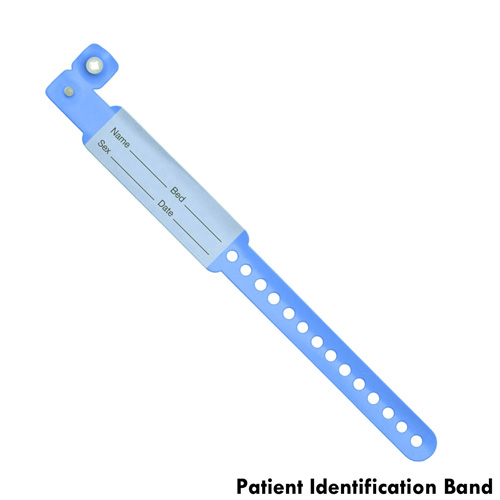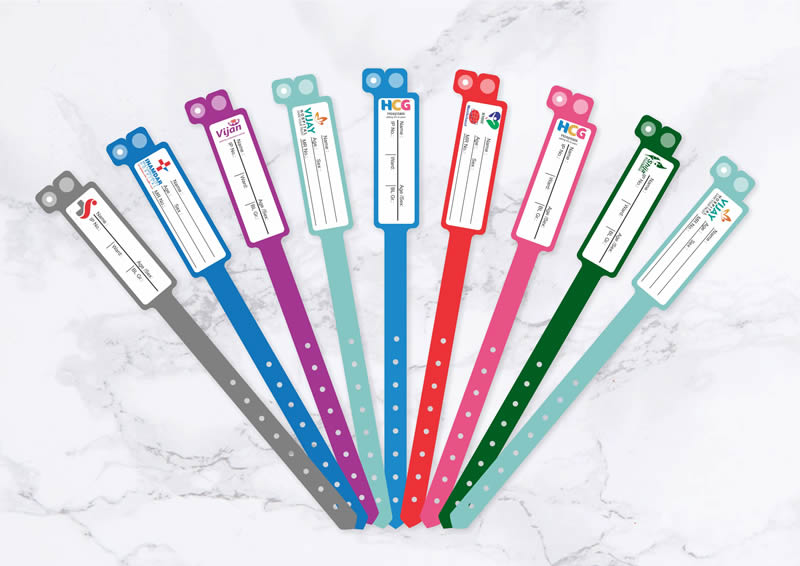Why Every Hospital Must Apply Patient Identification Band for Its Patients
Why Every Hospital Must Apply Patient Identification Band for Its Patients
Blog Article
Streamlining Client Care With Efficient Recognition Bands
The execution of reliable identification bands is a crucial component in boosting individual treatment within medical care setups. These bands not only serve to reduce the risks related to patient misidentification however likewise enhance communication amongst medical employees, thereby promoting a much safer atmosphere. Different sorts of identification bands deal with particular demands, from sturdy wristbands for adults to specialized bands for babies and critical situations. As the landscape of person identification develops, one need to think about the implications of these systems on total medical care shipment and patient outcomes. What developments wait for in this crucial area?
Importance of Individual Recognition
Making certain exact person identification is critical in healthcare setups, as it directly impacts the safety and top quality of care offered. Misidentification can lead to severe mistakes, including administering the incorrect medicine, performing incorrect procedures, or miscommunicating vital patient details. Such mistakes not just threaten person security however can also lead to lawful implications and lowered count on healthcare systems.
Efficient client recognition is fundamental to developing a safe setting where patients receive proper and customized treatment. It facilitates the exact documents of medical backgrounds, allergies, and treatment plans, ensuring that doctor have accessibility to crucial details in all times. Durable recognition procedures assist streamline interaction among medical team, improving partnership and reducing the threat of errors.

Sorts Of Recognition Bands
Identification bands play a crucial function in keeping accurate person records and enhancing security within health care environments. Different kinds of recognition bands are utilized to satisfy the particular requirements and needs of various client populaces.

An additional type is the ankle joint band, which is especially useful for infants and infants, guaranteeing that recognition stays intact even during care procedures. Specialized bands, such as those for allergy informs or drop danger signs, provide additional layers of safety by attracting prompt interest to critical client problems.
Lately, electronic recognition bands have actually acquired popularity, including barcodes or RFID technology that can be scanned to swiftly get person data. These bands improve process and minimize the risk of human error during individual recognition processes.
Advantages of Efficient Identification
Reliable identification of people with the use of recognition bands contributes considerably to total client safety and security and care top quality. By making sure that each patient is precisely determined, doctor can successfully match clinical treatments and procedures to the correct individual, minimizing the risk of mistakes. This is especially vital in environments with high individual turnover, where the possibility for misidentification is higher.
In addition, effective identification bands enhance communication among health care teams. Precise and clear patient recognition promotes partnership and guarantees that all group members understand a person's specific needs and case history. This communication is essential for delivering coordinated care, specifically in emergency situation scenarios where time is important.

Eventually, reliable identification with the use of recognition bands not just safeguards clients however additionally advertises a society of security within health care facilities (Patient Identification Band). By prioritizing accurate recognition, medical care companies can improve results and enhance the overall individual experience
Implementing Identification Equipments
While the significance of individual recognition is well recognized, the implementation of robust recognition systems Bonuses postures a complex difficulty for healthcare companies. Establishing effective identification systems needs a thorough approach, encompassing modern technology, workers training, and process assimilation.
First, companies should pick proper identification innovations, such as barcode scanning, RFID, or biometric systems. Patient Identification Band. These innovations must be reviewed based upon price, functionality, and compatibility with existing framework. A pilot program can help determine potential issues before full-blown execution
Following, thorough training for personnel is vital. All personnel must understand the importance of accurate person recognition and excel in using the chosen modern technologies. Routine training updates and analyses can reinforce best methods and ensure continued compliance.
Additionally, medical care organizations should establish standardized procedures Home Page for person recognition across all departments, reducing disparities and improving interaction. Normal audits can assist recognize spaces in adherence to these procedures.

Inevitably, a reliable execution of recognition systems not just enhances patient safety and security but also promotes a culture of liability and diligence within health care settings, making certain trusted and consistent individual treatment.
Future Trends in Patient Identification
Improvements in modern technology are established to reinvent patient identification techniques in health care setups. The assimilation of biometric recognition techniques, such as fingerprinting and facial recognition, is anticipated to improve precision and security. These innovations can significantly minimize the risk of misidentification, guaranteeing that people receive the correct treatments and drugs.
In addition, the implementation of blockchain innovation for person records is getting traction. This decentralized approach can provide a safe and secure and tamper-proof method for taking care of person identifications, thereby streamlining access to essential info throughout different medical care service providers.
One more pattern is the boosting use of mobile health and wellness applications that take advantage of QR codes for client identification. These applications enable real-time updates and easy access to patient data, equipping healthcare specialists to make informed decisions promptly.
In addition, expert system (AI) is positioned to play an essential function in analyzing person identification information, determining patterns, and predicting prospective recognition mistakes before they take place.
As these innovations progress, they promise not just to improve client safety but additionally to boost the general i loved this effectiveness of health care delivery systems. Welcoming these developments will be essential for future-proofing individual treatment practices.
Conclusion
Finally, reliable recognition bands are essential for boosting client safety and care quality within health care settings. By lessening the threats related to misidentification, these bands assist in exact and prompt info access, eventually boosting interaction among doctor. The execution of robust identification systems not just promotes a culture of safety but additionally placements health care institutions to adapt to future trends in client recognition technology, guaranteeing optimum results for patients in diverse professional settings.
As the landscape of individual identification develops, one need to think about the ramifications of these systems on overall healthcare shipment and individual end results.Effective client recognition is essential to developing a safe and secure setting where patients obtain proper and personalized care. Ultimately, focusing on efficient client recognition strategies not only cultivates a culture of security yet likewise adds to improved client end results and overall contentment with medical care services.
Effective recognition of patients with the usage of identification bands adds substantially to general individual safety and security and care top quality. The implementation of durable identification systems not just cultivates a culture of security however also settings health care organizations to adjust to future fads in individual identification innovation, making certain ideal outcomes for individuals in diverse professional settings.
Report this page